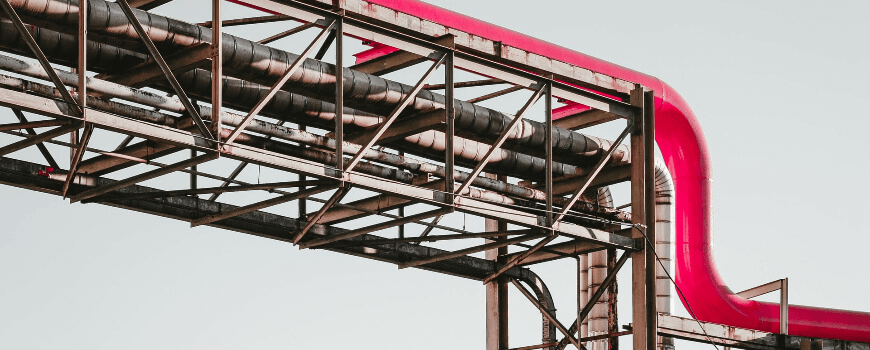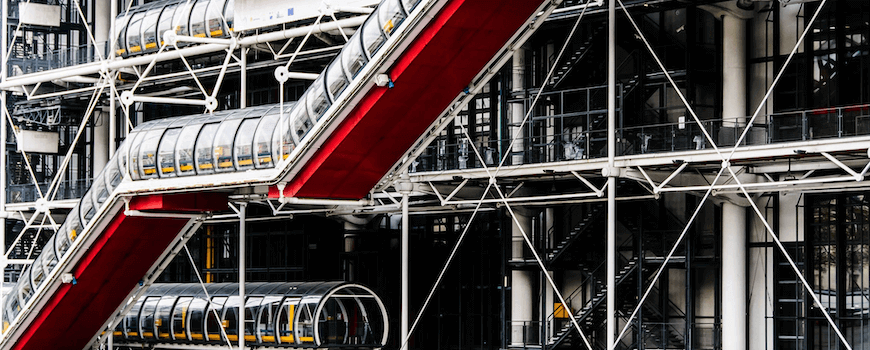
It is important to note that natural gas is flammable, therefore, to reach the goal safely, the transportation system consists of a complex network of pipelines. In addition to security, speed and efficiency are also important.
How do you transport natural gas to meet all these conditions, what are the main parts of natural gas pipelines, and what is the best way to transport natural gas when transporting by pipeline is not feasible?
Natural gas transportation
Natural gas systems can be grouped into three main categories:
- Processing
- Transportation
- Storage
In the production process, natural gas is found, brought to the surface, and brought into a condition suitable for transport. If the delivery can be executed with the help of international pipelines, then some components need to be removed from the natural gas before it can be safely delivered to high-pressure, long-distance pipelines.
The first component that must be removed is hydrocarbon gas liquids (HGL), but it usually involves several other components, such as oil, water, and other impurities such as sulfur, helium, nitrogen, hydrogen sulfide, and carbon dioxide.
But what happens when transporting by pipeline is not feasible? Then natural gas is usually transported in its liquefied state. For example, in regions that are too far from the gas extraction sites and there is no connecting pipeline, but where the conditions for road transport and water transport are given. In this case, instead of pipelines, they are delivered on cargo ships, as LNG can be transported extremely well and efficiently at sea. One cubic meter of liquefied LNG – after regasification – produces about 600 cubic meters of natural gas in normal condition.
The essential difference compared to natural gas transported by pipeline is that at storage temperature certain components (water, hydrocarbons, carbon dioxide, mercury) freeze to solid: they must be extracted almost completely from the liquefied gas. Other than that, everything else is the same as in the case of natural gas transported by pipeline in a gaseous state.
LNG stands for “liquefied natural gas”. It has almost the same composition as natural gas in the traditional sense – only in refrigerated form. This means that it has a temperature of -162 ° C and its density is lower than water’s.
It means that it should be stored differently than normal natural gas. How is natural gas stored? More information here.
But in most cases, it is still transported through international pipelines.

Natural gas pipelines
There are three types of pipelines:
- gathering system
- international pipeline system
- distribution system
The gathering system consists of small diameter pipelines that are low pressure. It transports the raw natural gas from the wellhead to the processing plant. If the natural gas has a component that needs to be removed (i.e. sulfur, hydrogen sulfide, carbon dioxide) then a specialized gathering pipe must be installed, that is not corrosive.
In certain areas and countries, in addition to international pipelines, there are also intrastate pipelines – but the technical and operational details are essentially the same.
It means when natural gas arrives at the final locations (where it will be used), it flows into smaller diameter pipelines called mains. These are the medium-sized pipelines, smaller than international natural gas pipelines, but bigger than the lines that go directly to homes and buildings.
Pipeline components

The pipes can be 5 cm to 125 cm, depending on their function. The international pipeline system is larger because much more natural gas passes through it.
The actual pipeline itself consists of:
- A strong carbon steel material
- Or a highly advanced plastic (if flexibility, versatility and the ease of replacement is required)
Every pipeline gets a specialized coating to ensure that it does not corrode because the replacement is much harder and complex.
Natural gas is also pressurized. To ensure that it remains pressurized, compression is required along with transportation. There are large compressor stations along with the whole pipeline system, usually placed at 60 to 150 km along the pipeline.
What is considered high-pressure natural gas?
High pressure means anywhere from 90 to 700 kg per square centimeter (cm2). Because natural gas is a flammable material, safety precautions are necessary.
There are leak detectors, markers (signs on the surface where the natural gas pipelines are running underground), routine sampling (random sampling to check its quality), testing, emergency response centers, and aerial patrols (planes to ensure no construction is taking place too close to the pipeline system).
Conclusion
The natural gas transmission system is primarily a giant international pipeline network, consisting of large, medium, and small-sized pipes.
During natural gas transportation, the most important factor is safety. Natural gas is a flammable gas, it can cause a human or natural disaster if not handled with care.
If transport by pipeline is not feasible, then natural gas is usually transported in its liquefied state, which has a temperature of -162 ° C and its density is lower than waters. It is called liquified natural gas (LNG) and transported via tanker ships.
As it seems, there are many advantages to using natural gas, but there are also disadvantages.